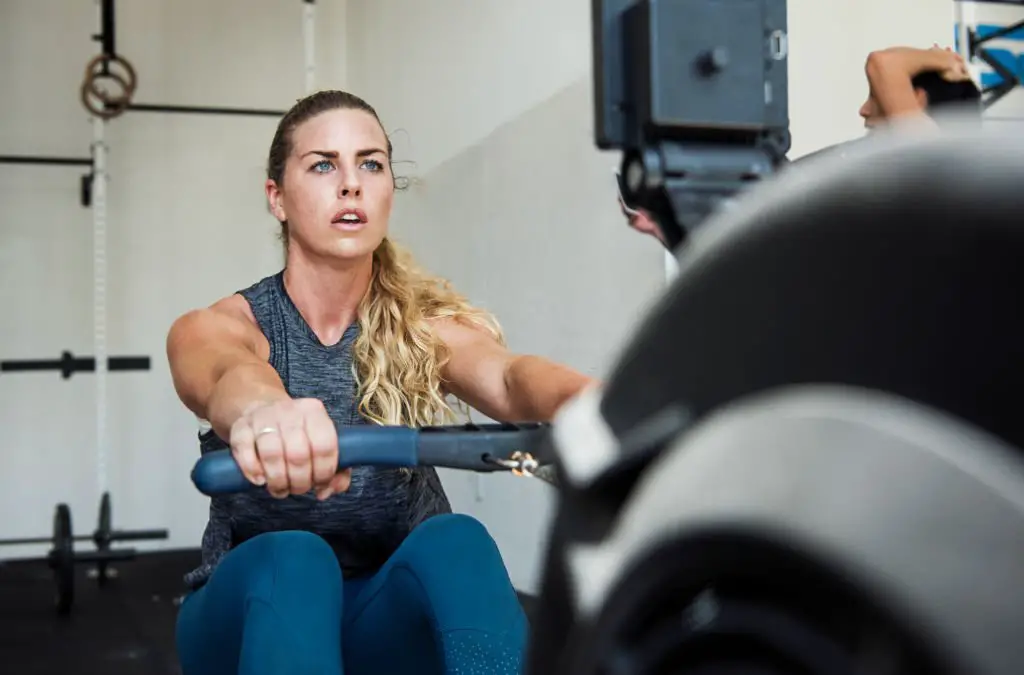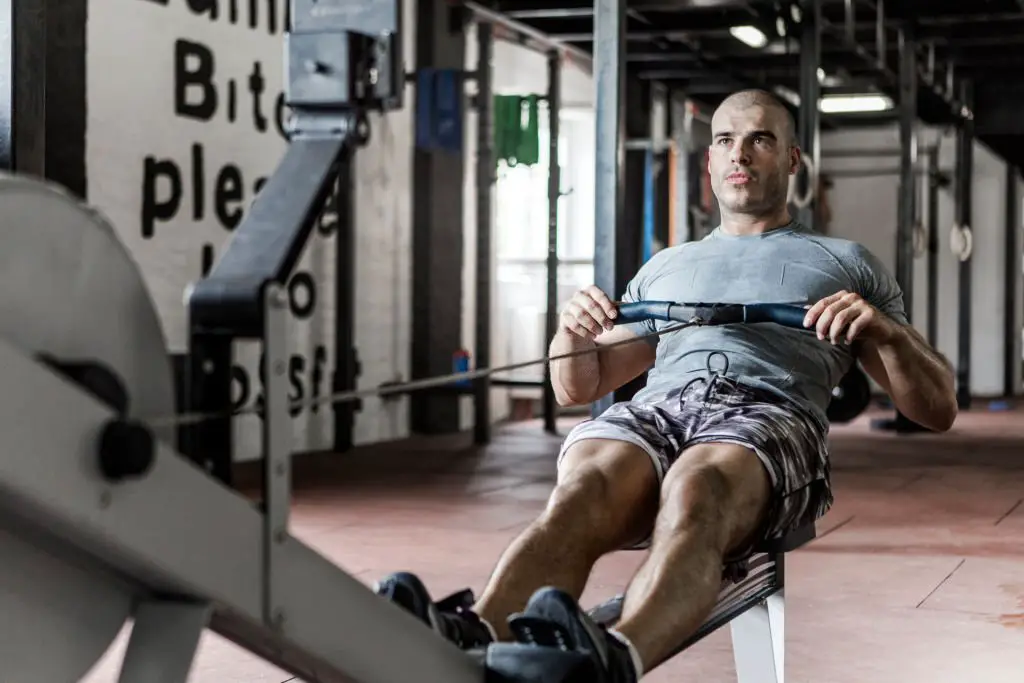If you’re just starting out on the rowing machine, congratulations! Rowing is an excellent full-body workout that burns calories while building strength and endurance. As a beginner, you may be wondering what a good 2000m row time is and how to improve your performance. In this post, we’ll cover the basics of the 2000m row and give you some tips for nailing it as a beginner. Let’s dive in!
Table of Contents
What is a 2000m row?
A 2000m row is a popular distance used in indoor rowing workouts. It’s equivalent to approximately 1.24 miles or four laps around a standard track. The goal of completing this distance is to improve endurance, strength and overall cardiovascular health.
To complete a 2000m row, you’ll need proper technique that involves using your legs, core and arms in unison while maintaining consistent breathing throughout the duration of the workout. Beginners should aim for an average time of about eight to ten minutes when starting out, with more experienced athletes aiming for times closer to seven minutes or under. With regular practice and proper form, you can gradually improve your time over time and achieve better fitness results on the machine.
How to measure your 2000m row time
Warm-up before starting, set the resistance level at an appropriate setting and get into proper form and technique are important factors to consider when measuring your 2000m row time. To begin with a warm-up, you can jog on the spot or do some light stretching exercises. This helps to loosen up your muscles and prepares you for the main exercise.
Setting the resistance level is crucial as it determines how hard it will be to complete your workout. Beginners should start with a lower resistance level and gradually increase it as their fitness improves. Proper form ensures that you’re using all of your muscle groups efficiently during each stroke.
Here are some tips for proper form:
- Sit up straight with both feet securely fastened on footrests.
- Hold onto the handlebar firmly but not too tight.
- Slide back smoothly while keeping arms extended forward.
- Pulling towards chest just below sternum then return slowly by extending arms again.
By following these guidelines, beginners can ensure they have measured their 2000m row time accurately, safely and effectively!
What is a good 2000m row time for beginners?
For beginners, a good 2000m row time can range from 9-12 minutes. However, it’s important to focus on technique and form before worrying about speed and time. Proper form involves maintaining a straight back, engaging your core muscles, pulling the handle towards your chest with your arms fully extended, and pushing off with powerful leg movements.
A good 2000m row time for beginners can range from 9-12 minutes, but proper form and technique should be prioritized over speed.
To improve your 2000m row time as a beginner, start slow and gradually increase the intensity of your workouts. Incorporate interval training by alternating between short bursts of high intensity rowing followed by periods of rest or lower intensity rowing. Additionally, focusing on building endurance through longer steady-state rows will also help improve overall fitness level for faster times in the future. Remember to always prioritize proper form over speed to prevent injury and maximize results!
Factors that affect 2000m row time
Body weight and composition, fitness level and training history, as well as technique and form on the rowing machine are all factors that affect your 2000m row time.
- Body weight and composition:
- A higher body fat percentage can be a hindrance to faster times.
- However, having more muscle mass can lead to stronger strokes.
- Fitness level and training history:
- Those who have been consistently working out will likely have better endurance than beginners.
- Cardiovascular health plays a significant role in how well you perform during your workout.
- Technique and form on the rowing machine:
- Proper technique ensures efficient use of energy for each stroke.
- Good posture helps prevent injury while improving performance.
Improving these areas through consistent practice will help decrease your 2000m row time. Keep in mind that it takes time for progress to show, so don’t get discouraged if you don’t see immediate results.
Tips for improving your 2000m row time
Incorporate interval training into your workouts to improve your 2000m row time. By alternating between high-intensity bursts and periods of active rest, you can increase your cardiovascular fitness and endurance. For example, try rowing at a moderate pace for one minute, then increasing the resistance or speed for 20-30 seconds before returning to the moderate pace.
Focus on proper technique when rowing, including posture, leg drive, and arm positioning. Keeping a straight back with shoulders down while engaging your core will help avoid injury and optimize power output in each stroke. Remember to use your legs as the main force behind each stroke; they should be doing around 60% of the work.
Gradually increase resistance or speed as you improve to avoid plateauing in your progress. As you become more comfortable with proper technique and build strength through interval training workouts, challenge yourself by upping the resistance or aiming for faster times per 500m split without sacrificing form. Push yourself out of your comfort zone but also listen to what feels right for your body – consistency is key!
Beginner workouts to improve your 2000m row time
If you’re a beginner looking to improve your 2000m row time, these workouts are for you. Interval sprints are great for building speed and endurance, as they allow you to go all out for short periods of time before recovering. Try doing 10 sets of 1-minute sprints with a minute rest in between.
Steady-state rows are perfect for improving your overall technique and endurance. Aim to maintain a steady pace throughout the workout, focusing on proper form and breathing techniques. Start with a goal of rowing continuously at an easy pace for 15-20 minutes.
Pyramid rows offer both variety and challenge by increasing intensity gradually before decreasing again. Begin with one minute at low intensity, then increase pace every minute until reaching max effort (around the halfway point), then decrease back down in one-minute increments until finishing back at low intensity. Repeat this pyramid structure twice through.
Remember that consistency is key when it comes to seeing improvements in your rowing performance!
Workout 1: Interval sprints
Interval training is a great way to build endurance and improve overall fitness. Incorporating sprints into your rowing workout can lead to increased cardiovascular health, improved metabolism, and weight loss. To structure an interval workout on the rowing machine, begin with a warm-up of 3-5 minutes at a comfortable pace. Then alternate between 30 seconds of high-intensity sprinting and 30 seconds of active recovery for about 20-25 minutes.
When performing sprints during intervals, it’s crucial to maintain proper technique to avoid injury and maximize results. Keep your core engaged, shoulders relaxed, and focus on driving through your legs while keeping good form throughout each stroke. Don’t forget to use the resistance settings appropriately to challenge yourself without sacrificing technique or risking injury!
Workout 2: Steady-state row
Steady-state workouts are a great way to build endurance and improve cardiovascular health. By maintaining a consistent pace over longer periods of time, you can challenge your body without putting too much strain on it. To ensure that you maintain the right pace during your steady-state row, focus on keeping your technique consistent. Keep your arms straight, engage your core muscles, and use powerful leg movements to generate momentum.
One way to stay motivated during a steady-state workout is by setting small goals for yourself along the way. For example, you might aim to complete 500 meters in under two minutes or reach a certain stroke rate by the halfway point of your workout. You can also use music or podcasts as distractions so that you don’t get bored or tired too quickly. With practice and patience, anyone can master the art of the steady-state row!
Workout 3: Pyramid row
Pyramid workouts are a great way to improve your overall fitness and endurance. The structure of the workout allows you to gradually increase the intensity, challenging yourself while still maintaining proper form. To set up a pyramid workout on the rowing machine, start with a short warm-up and then begin rowing at a moderate pace for 1 minute. Increase the intensity by adding 30 seconds of harder rowing at each stage until you reach your peak time, typically around 3-4 minutes. From there, decrease the time and intensity in increments until you finish with one final minute of moderate-paced rowing.
As you progress through each stage of the pyramid, fatigue can set in quickly but pushing through it is crucial to achieving results. Focus on your breathing and maintain good posture as this will help keep your energy levels consistent throughout each round. Additionally, try not to rush or overexert yourself during any particular stage – remember that consistency is key when it comes to building endurance!



